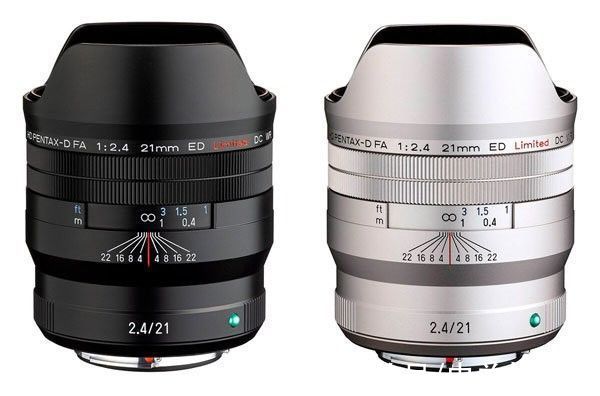智者不为愚者谋,勇者不为怯者死。这篇文章主要讲述文本检测实战:使用OpenCV实现文本检测(EAST 文本检测器)相关的知识,希望能为你提供帮助。
在本教程中,您将学习如何使用 OpenCV 使用 EAST 文本检测器检测图像中的文本。
EAST 文本检测器要求我们在我们的系统上运行 OpenCV 3.4.2 或 OpenCV 4 。
最后,我将提供我的 python + OpenCV 文本检测实现,以便您可以开始在自己的应用程序中应用文本检测。
为什么自然场景文本检测如此具有挑战性?

文章图片
在受约束的受控环境中检测文本通常可以通过使用基于启发式的方法来完成,例如利用梯度信息或文本通常被分组为段落并且字符出现在一条直线上的事实。
然而,自然场景文本检测是不同的——而且更具挑战性。 由于廉价数码相机的普及,更不用说现在几乎每部智能手机都配备了相机这一事实,我们需要高度关注拍摄图像的条件——此外,我们可以做出哪些假设,哪些不可行。 我在 Celine Mancas-Thillou 和 Bernard Gosselin 的 2017 年优秀论文《自然场景文本理解》中描述了自然场景文本检测挑战的总结版本,如下所示:
- 图像/传感器噪声:手持相机的传感器噪声通常高于传统扫描仪的噪声。此外,低价相机通常会插入原始传感器的像素以产生真实的颜色。
- 视角:自然场景文本自然会有与文本不平行的视角,使文本更难识别。
- 模糊:不受控制的环境往往会模糊,特别是如果最终用户使用的智能手机没有某种形式的稳定性。
- 光照条件:我们无法对自然场景图像中的光照条件做出任何假设。可能接近黑暗,相机上的闪光灯可能打开,或者太阳可能很耀眼,使整个图像饱和。
- 分辨率:并非所有相机都是一样的——我们可能会处理分辨率低于标准的相机。
- 非纸质物体:大多数(但不是全部)纸张不具有反射性(至少在您尝试扫描的纸张环境中)。自然场景中的文本可能具有反射性,包括徽标、标志等。
- 非平面对象:考虑将文本环绕在瓶子周围时会发生什么 - 表面上的文本会扭曲变形。虽然人类可能仍然能够轻松“检测”和阅读文本,但我们的算法将面临困难。我们需要能够处理这样的用例。
- 未知布局:我们不能使用任何先验信息来为我们的算法提供有关文本所在位置的“线索”。
随着 OpenCV 3.4.2 和 OpenCV 4 的发布,我们现在可以使用名为 EAST 的基于深度学习的文本检测器,该检测器基于 Zhou 等人 2017 年的论文 EAST: An Efficient and Accurate Scene Text Detector。
我们称该算法为“EAST”,因为它是一个:高效且准确的场景文本检测管道。
这组作者说,EAST 管道能够预测 720p 图像上任意方向的单词和文本行,而且可以以 13 FPS 的速度运行。 也许最重要的是,由于深度学习模型是端到端的,因此可以避开其他文本检测器通常应用的计算成本高的子算法,包括候选聚合和单词分区。
为了构建和训练这样一个深度学习模型,EAST 方法利用了新颖、精心设计的损失函数。 有关 EAST 的更多详细信息,包括架构设计和训练方法,请务必参阅作者的出版物。
项目结构
$ tree --dirsfirst
.
├── images
│├── car_wash.png
│├── lebron_james.jpg
│└── sign.jpg
├── frozen_east_text_detection.pb
├── text_detection.py
└── text_detection_video.py
请注意,我在 images/ 目录中提供了三张示例图片。 您可能希望添加自己的智能手机收集的图像或您在网上找到的图像。 我们今天将审查两个 .py 文件:
- text_detection.py :检测静态图像中的文本。
- text_detection_video.py :通过网络摄像头或输入视频文件检测文本。
首先,Python 中没有 Point2f 和 RotatedRect 函数,因此,我无法 100% 模仿 C++ 实现。 C++ 实现可以生成旋转的边界框,但不幸的是,我今天与您分享的那个不能。
其次,NMSBoxes 函数不返回 Python 绑定的任何值(至少对于我的 OpenCV 4 预发布安装),最终导致 OpenCV 抛出错误。 NMSBoxes 函数可以在 OpenCV 3.4.2 中工作,但我无法对其进行详尽的测试。
我在 imutils 中使用我自己的非最大值抑制实现解决了这个问题,但同样,我不相信这两个是 100% 可互换的,因为看起来 NMSBoxes 接受额外的参数。
鉴于所有这些,我已尽最大努力为您提供最好的 OpenCV 文本检测实现,使用我拥有的工作功能和资源。如果您对该方法有任何改进,请随时在下面的评论中分享。
使用 OpenCV 实现我们的文本检测器在开始之前,我想指出您的系统上至少需要安装 OpenCV 3.4.2(或 OpenCV 4)才能使用 OpenCV 的 EAST 文本检测器,接下来,确保您的系统上也安装/升级了 imutils:
pip install --upgrade imutils
此时您的系统已经配置完毕,因此打开 text_detection.py 并插入以下代码:
# import the necessary packages
from imutils.object_detection import non_max_suppression
import numpy as np
import argparse
import time
import cv2
# construct the argument parser and parse the arguments
ap = argparse.ArgumentParser()
ap.add_argument("-i", "--image", type=str,
help="path to input image")
ap.add_argument("-east", "--east", type=str,
help="path to input EAST text detector")
ap.add_argument("-c", "--min-confidence", type=float, default=0.5,
help="minimum probability required to inspect a region")
ap.add_argument("-w", "--width", type=int, default=320,
help="resized image width (should be multiple of 32)")
ap.add_argument("-e", "--height", type=int, default=320,
help="resized image height (should be multiple of 32)")
args = vars(ap.parse_args())
首先,导入所需的包和模块。 值得注意的是,我们从 imutils.object_detection 导入了 NumPy、OpenCV 和我对 non_max_suppression 的实现。 然后我们继续解析五个命令行参数:
–image :我们输入图像的路径。
–east : EAST 场景文本检测器模型文件路径。
–min-confidence :确定文本的概率阈值。 可选, default=0.5 。
–width :调整后的图像宽度 - 必须是 32 的倍数。默认值为 320 时可选。
–height :调整后的图像高度 - 必须是 32 的倍数。默认值为 320 时可选。
【文本检测实战(使用OpenCV实现文本检测(EAST 文本检测器))】重要提示:EAST 文本要求您的输入图像尺寸是 32 的倍数,因此如果您选择调整 --width 和 --height 值,请确保它们是 32 的倍数! 从那里,让我们加载我们的图像并调整它的大小:
# load the input image and grab the image dimensions
image = cv2.imread(args["image"])
orig = image.copy()
(H, W) = image.shape[:2]
# set the new width and height and then determine the ratio in change
# for both the width and height
(newW, newH) = (args["width"], args["height"])
rW = W / float(newW)
rH = H / float(newH)
# resize the image and grab the new image dimensions
image = cv2.resize(image, (newW, newH))
(H, W) = image.shape[:2]
我们加载并复制我们的输入图像。 确定原始图像尺寸与新图像尺寸的比率(基于为 --width 和 --height 提供的命令行参数)。 然后我们调整图像大小,忽略纵横比。 为了使用 OpenCV 和 EAST 深度学习模型进行文本检测,我们需要提取两层的输出特征图:
# define the two output layer names for the EAST detector model that
# we are interested -- the first is the output probabilities and the
# second can be used to derive the bounding box coordinates of text
layerNames = [
"feature_fusion/Conv_7/Sigmoid",
"feature_fusion/concat_3"]
我们构建了一个 layerNames 列表:
第一层是我们的输出 sigmoid 激活,它为我们提供了一个区域是否包含文本的概率。
第二层是输出特征图,表示图像的“几何”——我们将能够使用这个几何来推导出输入图像中文本的边界框坐标
让我们加载 OpenCV 的 EAST 文本检测器:
# load the pre-trained EAST text detector
print("[INFO] loading EAST text detector...")
net = cv2.dnn.readNet(args["east"])
# construct a blob from the image and then perform a forward pass of
# the model to obtain the two output layer sets
blob = cv2.dnn.blobFromImage(image, 1.0, (W, H),
(123.68, 116.78, 103.94), swapRB=True, crop=False)
start = time.time()
net.setInput(blob)
(scores, geometry) = net.forward(layerNames)
end = time.time()
# show timing information on text prediction
print("[INFO] text detection took {:.6f} seconds".format(end - start))
我们使用 cv2.dnn.readNet 将神经网络加载到内存中,方法是将路径传递给 EAST 检测器。
然后,我们通过将其转换为 blob 来准备我们的图像。要阅读有关此步骤的更多信息,请参阅深度学习:OpenCV 的 blobFromImage 工作原理。 为了预测文本,我们可以简单地将 blob 设置为输入并调用 net.forward。 这些行被抓取时间戳包围,以便我们可以打印经过的时间。 通过将 layerNames 作为参数提供给 net.forward,我们指示 OpenCV 返回我们感兴趣的两个特征图:
- 用于导出输入图像中文本的边界框坐标的输出几何图
- 同样,分数图,包含给定区域包含文本的概率
# grab the number of rows and columns from the scores volume, then
# initialize our set of bounding box rectangles and corresponding
# confidence scores
(numRows, numCols) = scores.shape[2:4]
rects = []
confidences = []
# loop over the number of rows
for y in range(0, numRows):
# extract the scores (probabilities), followed by the geometrical
# data used to derive potential bounding box coordinates that
# surround text
scoresData = https://www.songbingjia.com/android/scores[0, 0, y]
xData0 = geometry[0, 0, y]
xData1 = geometry[0, 1, y]
xData2 = geometry[0, 2, y]
xData3 = geometry[0, 3, y]
anglesData = https://www.songbingjia.com/android/geometry[0, 4, y]
我们首先获取分数卷的维度(,然后初始化两个列表:
- rects :存储文本区域的边界框 (x, y) 坐标
- 置信度:将与每个边界框关联的概率存储在 rects 中
# loop over the number of columns
for x in range(0, numCols):
# if our score does not have sufficient probability, ignore it
if scoresData[x] < args["min_confidence"]:
continue
# compute the offset factor as our resulting feature maps will
# be 4x smaller than the input image
(offsetX, offsetY) = (x * 4.0, y * 4.0)
# extract the rotation angle for the prediction and then
# compute the sin and cosine
angle = anglesData[x]
cos = np.cos(angle)
sin = np.sin(angle)
# use the geometry volume to derive the width and height of
# the bounding box
h = xData0[x] + xData2[x]
w = xData1[x] + xData3[x]
# compute both the starting and ending (x, y)-coordinates for
# the text prediction bounding box
endX = int(offsetX + (cos * xData1[x]) + (sin * xData2[x]))
endY = int(offsetY - (推荐阅读
- dart系列之:dart类的扩展
- Linux系统目录名称命名规则及用途
- sysctl: setting key "net.core.somaxconn":Invalid a
- CentOS 8.4 yum源配置
- 关于权限申请库PermissionsDispatcher的使用
- #yyds干货盘点#JavaScript 常用类型转换
- Intellij idea 复制粘贴查找快捷键失效问题
- 计算机基础和linux安装帮助
- sshd服务搭建与管理-sshd服务防止BAOLIPOJIE














